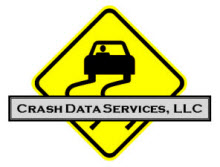What are Event Data Recorders?
Event Data Recorders (EDRs) are electronic devices, commonly called Black Boxes, that are installed in motor vehicles. EDRs have the ability to record information about what a vehicle did before, during and immediately after a traffic crash. EDRs are generally part of a vehicle's Airbag Control Module or Powertrain Control Module.
Do all vehicles have EDR's?
No. However, the majority of vehicles currently manufactured have some type of EDR installed in them. The National Highway Traffic Safety Administration (NHTSA) estimates that by 2010, at least 85 % of all vehicles manufactured will have EDRs.
Do all EDRs record the same information?
No. Currently, the circumstances under which an EDR records and the type of data recorded is contingent upon the year, make, and model of the vehicle. An EDR can be configured to record a variety of data including, but not limited to, information about how a vehicle's airbag and restraint system functioned as well as pre-crash speed, brake use or throttle application.
Do any EDRs record the date, time, and geographic location of an accident?
No. While many vehicles have the ability to monitor the date, time and their location through onboard navigation systems or global positioning systems, no EDRs are currently configured to record said information in the event of an accident.
Can EDRs record if the vehicle is turned off?
No. EDRs can only record when power is applied. Powering of the EDR requires that battery power is available and the ignition is in the "on" position.
How is EDR data accessed and analyzed?
General Motors, Ford, and Daimler Chrysler have already released a method of downloading the data contained within their EDRs to the public. The EDR data is accessed through a Crash Data Retrieval (CDR) system manufactured by BOSCH Diagnostics. Currently, other EDRs are only accessible through the manufacturers.
Will EDRs ever become standardized?
Yes. NHTSA has released a ruling (NHTSA-2006-25666; 49 CFR Part 563 Titled: Event Data Recorders) that will regulate the type of information that is recorded and the method in which it is stored. The ruling will affect all vehicles manufactured for North America after September 1st 2012 and will require that all manufacturers make their EDR data available to the public.
Is EDR information admissible in court?
Yes. Regardless of state, EDR data has been consistently accepted in criminal prosecutions and civil litigation. In many states, including Illinois, EDR data has been tested and found to meet the Frye standard for admissibility. (Illinois App. Ct., 4th Dist., No. 4-01-0237, Appeal from Circuit Court of Woodford County, Case No. 98L21 - 2002).
Who owns the information contained within an EDR?
Generally, the data contained within an EDR should be treated as property of the vehicle owner. If consent to access the information from an EDR is being sought, then the vehicle owner should be contacted.
Do any states have EDR laws?
Yes. There are currently 12 states with EDR laws. Arkansas, California, Colorado, Connecticut, Maine, New Hampshire, New York, Nevada, North Dakota, Oregon, Texas and Virginia all have laws governing EDRs. Many more states are expected to draft legislation in the next few years.
Shawn Gyorke is a Certified Accident Reconstruction Expert and Crash Data Retrieval Analyst with over 9 years law enforcement experience. Shawn is also the owner of Crash Data Services, LLC, an expert witness service specializing in accident reconstruction and EDR downloads.
See Mr. Gyorke's Profile on Experts.com.
©Copyright - All Rights Reserved
DO NOT REPRODUCE WITHOUT WRITTEN PERMISSION BY AUTHOR.









